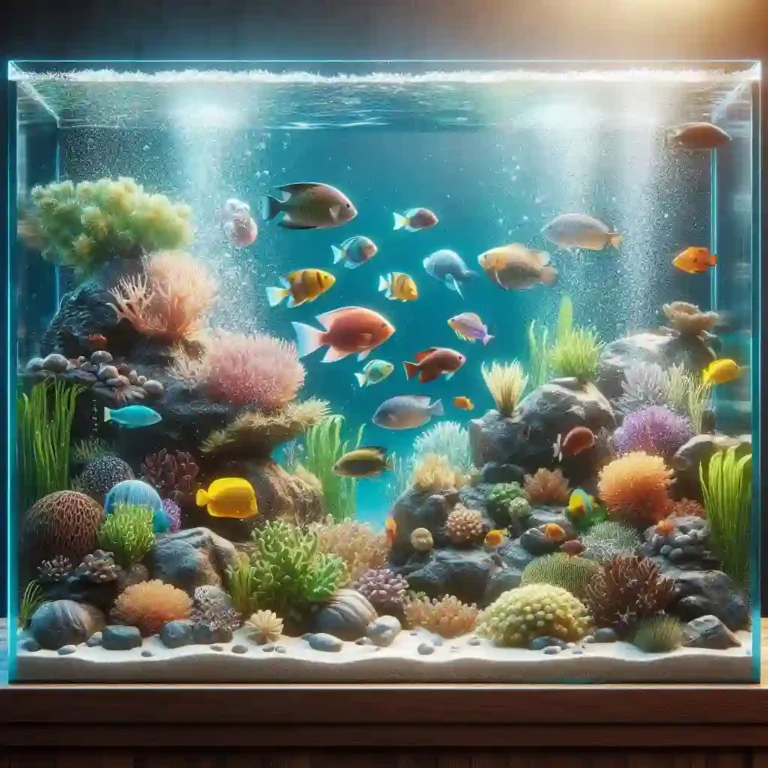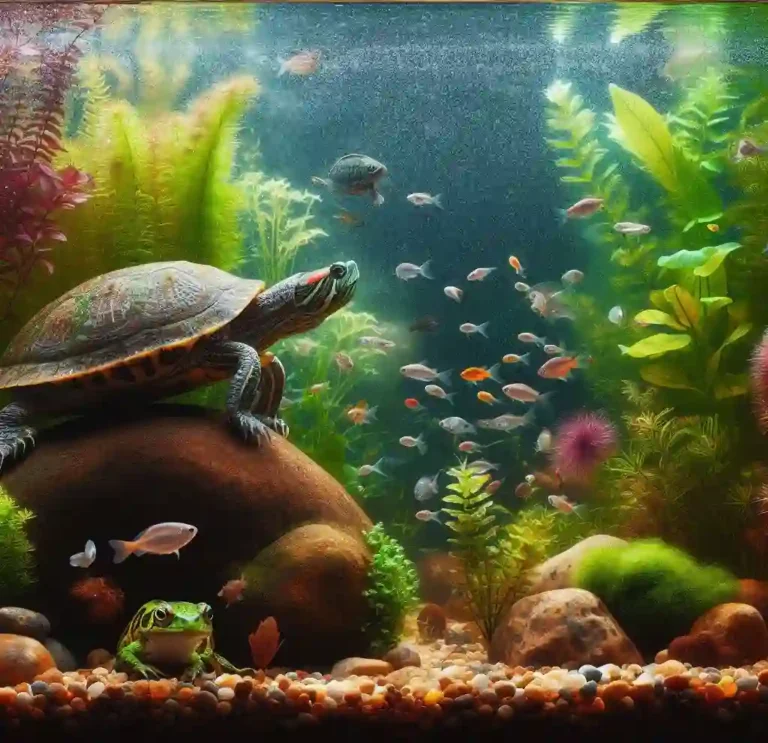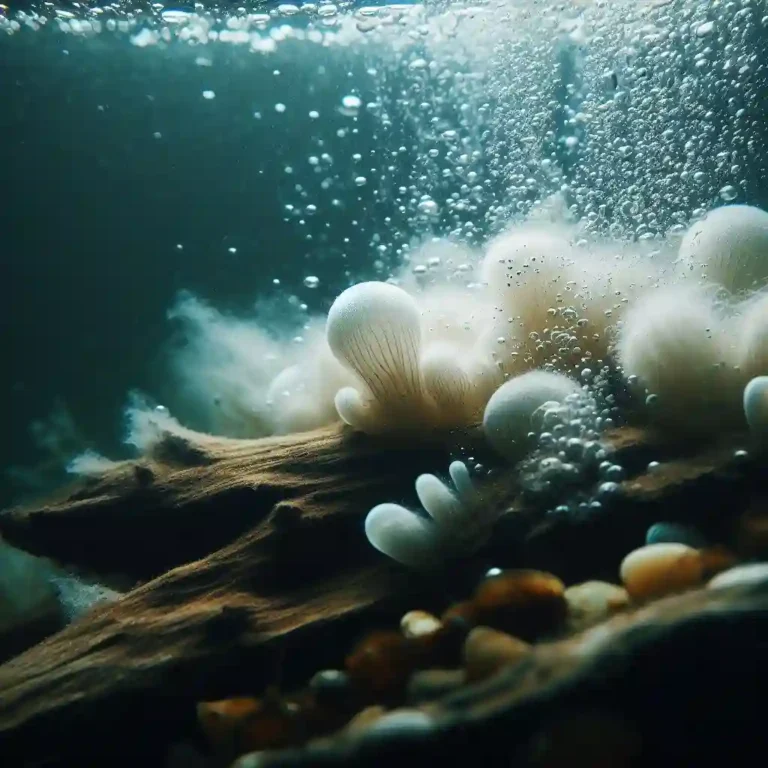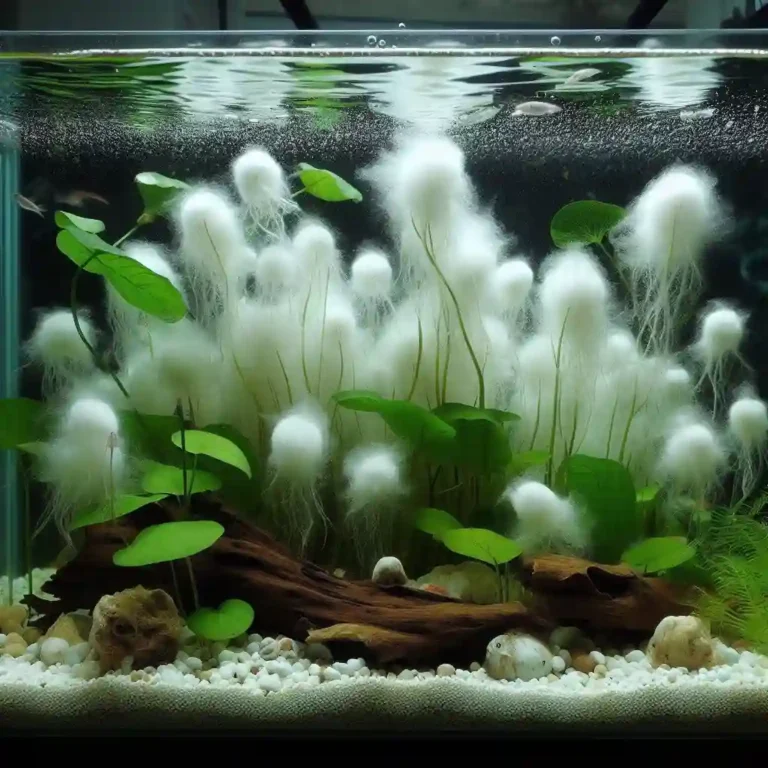Algae Eater with Betta: A Detailed Guide On Aquarium Compatibility
Algae Eater with Betta: Are you considering adding an algae eater to your betta fish aquarium? Many aquarists wonder about the compatibility of algae eaters with bettas.
In this detailed study, we will explore the secrets of aquarium compatibility between algae eaters and betta fish.
Algae Eater with Betta: A Quick Guide
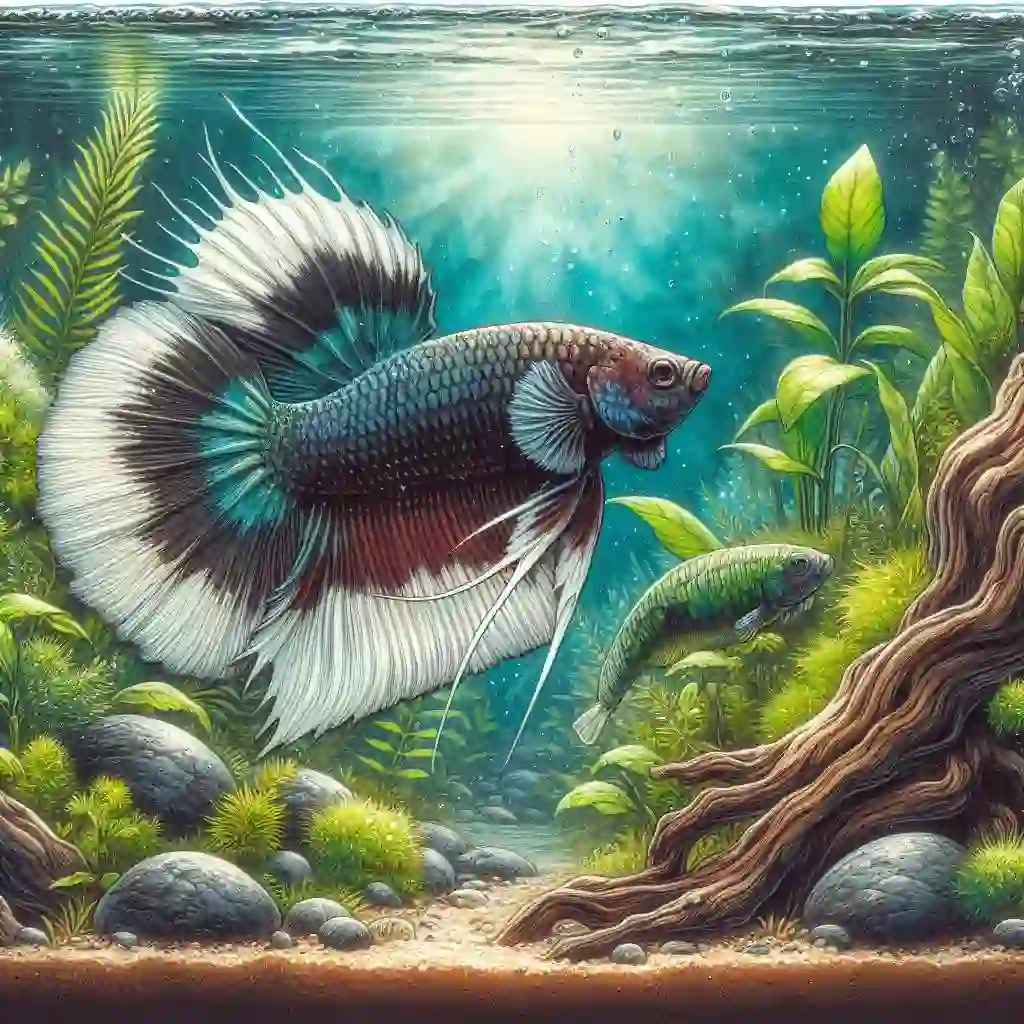
Choosing the Right Algae Eater
- Nerite Snails: Ideal for their hardiness and non-aggressive nature. They’re unlikely to be bothered by bettas due to their size.
- Amano Shrimp: Their speed and agility make them less likely targets for bettas, plus they have a strong appetite for algae.
- Otocinclus Catfish: Small and peaceful, these catfish keep to themselves and can coexist with bettas without encroaching on their territory.
Aquarium Setup for Success
- Size Matters: Ensure the tank is spacious enough to allow for distinct territories and reduce competition.
- Hideaways are Key: Equip the tank with plants and decorations that provide ample hiding spots for both species.
- Water Conditions: Regularly check and maintain ideal water parameters for both your betta and algae eater, focusing on temperature, pH, and cleanliness.
Introducing Your Algae Eater to the Betta
- First Impressions: Introduce algae eaters to the aquarium before the betta to establish territories and reduce initial aggression.
- Observation: Closely monitor interactions during the first few weeks to gauge compatibility and adjust as needed.
- Separate Diets: Provide species-specific diets to ensure both the betta and algae eater receive proper nutrition without competition.
- Supplemental Feeding: If necessary, supplement the algae eater’s diet with algae wafers or vegetables to compensate for low algae levels in the tank.
Maintenance
- Monitor and Adjust: Keep an eye on behavior and environmental factors, ready to intervene if signs of stress or aggression appear.
- Tank Maintenance: Regular cleaning and water changes are essential to prevent disease and maintain a healthy environment for both fish.
Understanding the Betta Fish: Temperament and Habitat Needs
Betta fish, or Siamese fighting fish, captivate with their brilliant hues and majestic fins. Their allure, however, comes with a notable predisposition for aggression, making them solitary creatures by nature.
This aggressive streak is primarily directed towards other bettas but can extend to different species, emphasizing the need for cautious selection of tank mates. Bettas demand an environment that mirrors their natural habitat—calm, warm waters with ample space to establish a territory.
This habitat must include areas for hiding and rest, as well as open water for swimming. When considering tank mates like algae eaters, the aquarium setup should cater to these specific needs of the betta, ensuring a stress-free environment that supports their health and well-being.
Understanding and accommodating the unique behavior and habitat requirements of bettas is fundamental in fostering a thriving aquatic community.
The Role of Algae Eaters in an Aquarium
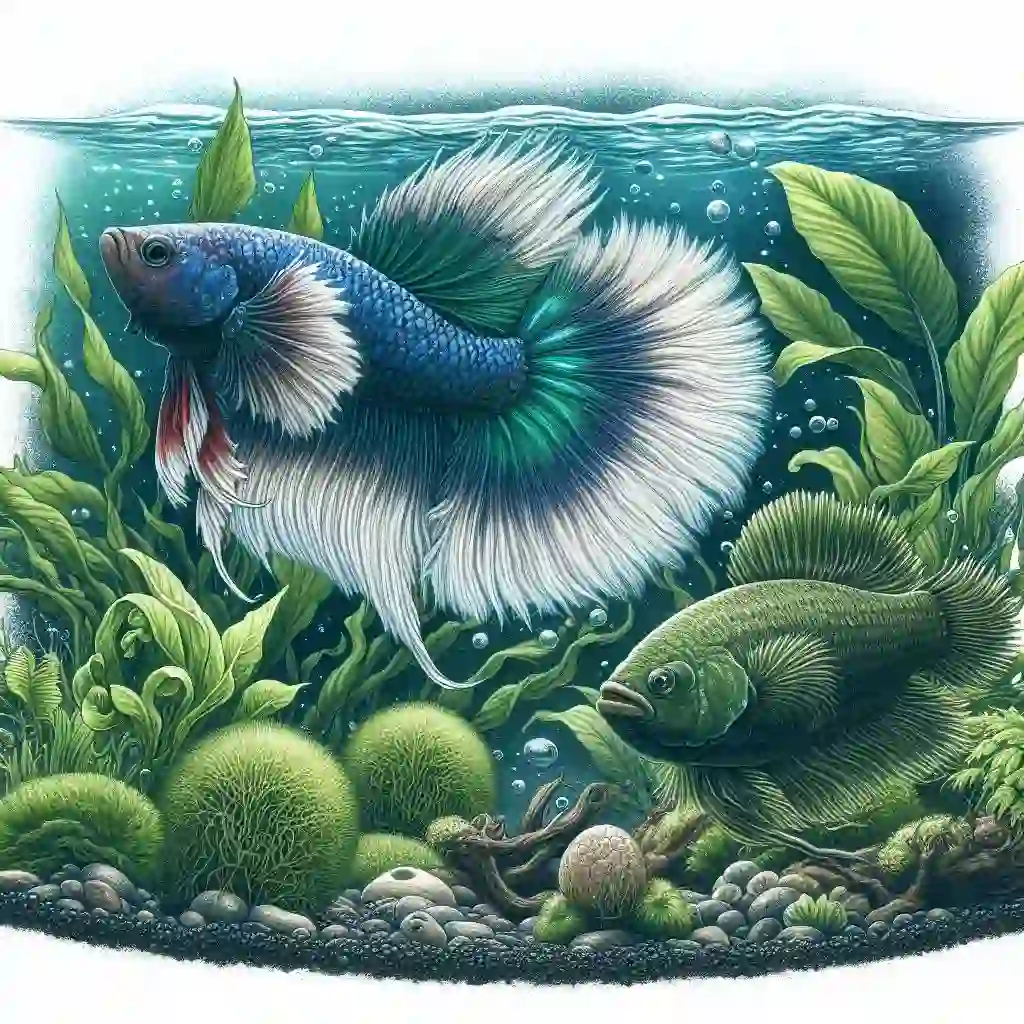
In any aquatic environment, algae eaters serve as natural janitors, effectively managing the growth of algae and thereby contributing to a cleaner, healthier habitat for all inhabitants. Their presence helps to limit the spread of green films and other types of algae that can otherwise overrun tank surfaces and decoration, compromising water quality and aesthetic appeal.
By consuming algae, these beneficial creatures not only enhance the visual clarity of the aquarium but also play a critical role in the nutrient cycle, removing waste that, if left unchecked, could lead to poor water conditions.
Their diligent work supports a balanced ecosystem within the tank, reducing the need for chemical treatments to manage algae growth and ensuring a more natural living environment for species like the betta fish. Integrating algae eaters into a betta tank, therefore, is not just about aesthetics; it’s about fostering a dynamic, healthy aquatic system.
Best Algae Eaters to Pair with Betta Fish
Selecting the right algae eater for a tank housing a betta is critical for peace and harmony. Nerite snails are a top choice; their hardy nature and effectiveness in cleaning algae make them excellent companions that are too large for bettas to bother.
Amano shrimp, known for their robust algae-eating appetite, are another great option. They are quick and agile, often able to escape a betta’s attention.
Otocinclus catfish, small yet efficient algae grazers, can coexist with bettas due to their peaceful demeanor and preference for keeping to themselves.
These choices share a common trait: they are non-aggressive and do not infringe on the betta’s territory, making them ideal candidates for a shared tank environment.
When introducing these algae eaters, ensure their safety by providing ample hiding spaces and closely observing the aquarium’s dynamics to ensure a smooth integration into the betta’s habitat.
Preparing Your Aquarium for Cohabitation
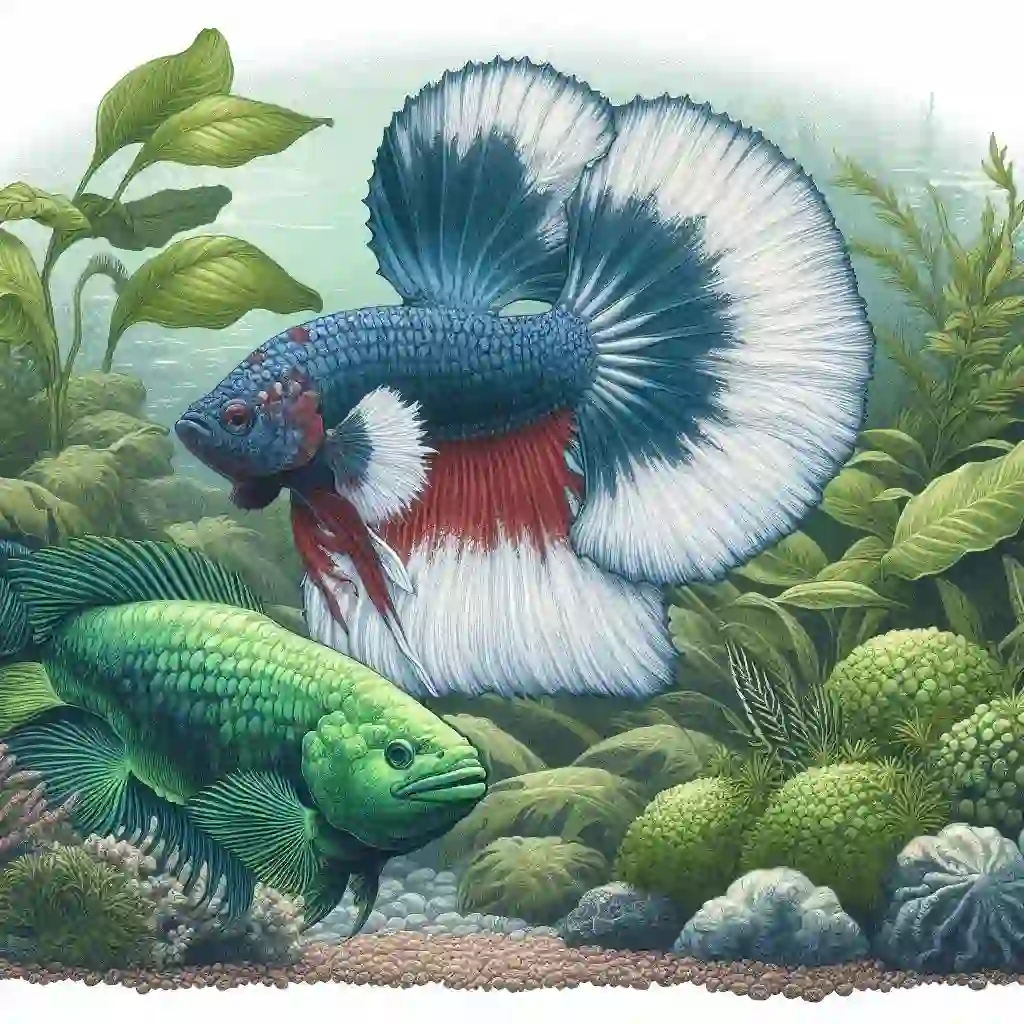
To set the stage for a successful introduction of an algae eater into your betta fish’s environment, it’s crucial to first ensure the aquarium is conducive to cohabitation.
Begin by verifying that the tank’s water parameters, including temperature, pH, and ammonia levels, are within the ideal ranges for both species.
A spacious tank is essential, as it allows for the establishment of distinct territories, minimizing stress and potential conflict. Additionally, enrich the habitat with plants and decorations that offer hiding places and retreats for both the betta and the algae eater.
This setup not only mimics their natural environments but also provides essential barriers and breaks in the line of sight, reducing aggressive encounters.
Introducing the algae eater into the tank prior to the betta can help establish a sense of territory for the newcomer, laying the groundwork for a smoother integration and a harmonious aquatic community.
Monitoring and Maintaining Aquarium Harmony
Observing the dynamics between your betta and algae eater is vital in the early stages of their cohabitation. Regularly watch for any behavioral changes that indicate stress or aggression, such as the betta chasing or the algae eater hiding excessively.
Quick intervention may be required to adjust their living conditions or, in some cases, to house them separately. To support a peaceful coexistence, perform consistent water quality checks and clean the tank routinely to prevent disease and reduce competition for resources.
Providing a varied diet that meets the nutritional needs of both species will also help in maintaining their health and reducing potential friction. Keeping a vigilant eye on their interactions and ensuring their environmental needs are met lays the foundation for a harmonious aquarium life.
The Importance of Proper Diet for Betta and Algae Eaters
To foster the health and vitality of both betta fish and their algae-eating companions, understanding and providing their distinct dietary needs is essential. Betta fish thrive on a protein-rich diet, ideally sourced from high-quality pellets or flakes designed specifically for bettas, supplemented with occasional live or frozen foods such as bloodworms or brine shrimp.
Conversely, algae eaters, depending on their species, generally consume algae and biofilm as their primary food source, which naturally accrues in the aquarium.
However, in tanks where algae levels are low, supplementing their diet with algae wafers or blanched vegetables can ensure they receive adequate nutrition.
Ensuring that each species receives the correct type of food not only supports their health but also discourages competition for food resources, facilitating a more harmonious coexistence within the aquarium.
Managing Tank Space for Betta and Algae Eaters
Effective management of tank space is a cornerstone in harmonizing the relationship between betta fish and algae eaters. A spacious environment minimizes stress and aggression by allowing ample room for both species to thrive without encroaching on each other’s territory.
It’s advisable to choose a tank that supports this dynamic, ideally one that’s larger than the minimum size recommended for bettas alone. This extra space is not just about physical room; it also supports the intricate balance of the ecosystem, promoting better water quality and providing a diverse landscape for exploration and refuge.
Strategic placement of plants, rocks, and decorations can further delineate territories within the tank, offering natural barriers that help prevent disputes. Ensuring that the aquarium layout accommodates the needs and behaviors of both betta fish and algae eaters is essential for their coexistence and well-being.
Avoiding Potential Issues
To circumvent potential conflicts between betta fish and algae eaters, careful observation and intervention strategies are vital. Be alert to signs of aggression, such as persistent chasing or nipping from the betta, which can lead to stress and harm for the algae eater.
In cases where aggression escalates, it may become necessary to separate the fish to ensure their safety and well-being. Additionally, ensuring the tank is sufficiently large and enriched with ample hiding spaces can greatly reduce territorial disputes.
This proactive approach allows for a more peaceful cohabitation, promoting a stress-free environment for both species. Implementing these strategies effectively addresses the challenges of keeping betta fish and algae eaters together, fostering a mutually beneficial relationship within the aquarium.
Tips for Avoiding Aggression and Stress in Betta-Algae Eater Pairings
To mitigate aggression and stress when pairing bettas with algae eaters, strategic aquarium design plays a crucial role. Incorporating an abundance of plants and decorations offers necessary hideaways and visual barriers, crucial for delineating territory and providing secure retreats.
Opting for species known for their peaceful nature and compatibility with bettas, such as Nerite snails or Amano shrimp, significantly reduces the risk of aggressive interactions.
It’s also beneficial to introduce the algae eater to the aquarium before adding the betta, allowing the former to acclimate and establish its own space within the tank.
Regular monitoring of their interaction aids in early detection of any signs of aggression, facilitating timely intervention. Ensuring that each inhabitant has ample space and environmental enrichment is key to promoting a serene and stress-free cohabitation.
Creating a Peaceful Environment for Both Fish
Crafting a serene habitat for both your betta and algae eater begins with understanding and meeting their distinct needs. Ensuring your aquarium is spacious enough to accommodate both species comfortably is crucial.
This means not just a larger tank, but also one that’s thoughtfully arranged with plants, caves, and driftwood that provide shelter and territories for each fish. A thoughtful approach to their diet—feeding them in separate areas if necessary—helps prevent competition and ensures each fish receives the nutrition they require.
Keep a close watch on their interactions, ready to make adjustments to the tank’s layout or even the community itself to preserve peace. This vigilant, yet gentle, management of their environment encourages a stress-free coexistence, allowing both your betta and algae eater to flourish side by side in a shared space.
FAQs
Can bettas live with all types of algae eaters?
Not all algae eaters are suitable companions for betta fish. Species like the Nerite snail, Amano shrimp, and Otocinclus catfish are generally good choices due to their peaceful nature and ability to coexist without infringing on the betta’s territory.
Will a betta fish attack an algae eater?
While bettas are known for their territorial behavior, choosing compatible algae eaters and providing a well-structured tank with ample hiding places can minimize aggression. Observing their interaction early on is crucial to prevent any potential conflict.
How big should the tank be for a betta and an algae eater to coexist?
A tank larger than the minimum recommended size for bettas alone is advisable. This provides enough space for both species to establish their territories and reduces stress and aggression.
Do algae eaters need special food in a betta tank?
If algae levels in the tank are low, supplementing the algae eater’s diet with algae wafers or blanched vegetables can ensure they receive adequate nutrition.
What should I do if my betta is aggressive towards the algae eater?
If signs of aggression persist, such as chasing or nipping, it may be necessary to separate them to ensure the well-being of both fish.

Hello, I’m Aria Cooper, the heart and soul behind Swimmy Buddies. As a devoted fish aficionado, I share my aquatic adventures and expertise to inspire your own underwater explorations. 🐠🌊


